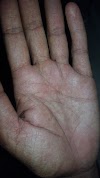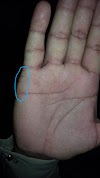Palmistry
Palmistry,
also known as Chiromancy, is an ancient art that has been practiced for
thousands of years. It is believed to have originated in India, and over time,
it spread to other parts of the world, including China, Egypt, Greece, and
Rome. Palmistry is the practice of reading the lines and other features on the
hand to gain insight into a person's personality, traits, and future.If you're
interested in palmistry, you might be wondering when it started and how
beneficial it is in today's world. In this blog, we'll answer those questions
and explore the differences between palmistry and numerology.
What is Palmistry?
Palmistry
is the art of reading the lines and other features on the hand to gain insight
into a person's personality and future. The lines on the hand are said to
represent different aspects of a person's life, including love, career, and
health. A palm reader will also look at other features, such as the shape of
the hand and the length of the fingers, to gain further insight.
When Did Palmistry
Start?
Palmistry
has been practiced for thousands of years, and its origins can be traced back
to ancient India. The first written records of palmistry date back to around
2000 BCE, and over time, the practice spread to other parts of the world. In
China, palmistry was used as a tool for medical diagnosis, while in Greece and
Rome, it was used to predict a person's future.
How Beneficial is
Palmistry in Today's World?
In
today's world, many people turn to palmistry as a way to gain insight into
their lives. While some might be skeptical of the practice, many believe that
it can be a helpful tool for personal growth and self-discovery. Palmistry can
help people understand their strengths and weaknesses, as well as gain insight
into their relationships and career paths.
Difference Between
Palmistry and Numerology
While
palmistry and numerology are both methods of divination, there are some key
differences between the two. Numerology is the practice of using numbers to
gain insight into a person's personality and future. This can include using a
person's name, birthdate, or other numbers associated with them.
Palmistry,
on the other hand, is a more tactile approach to divination. Instead of using
numbers, palm readers look at the lines and other features on a person's hand
to gain insight into their personality and future.
In Conclusion
Palmistry
is an ancient art that has been practiced for thousands of years. It is a
popular tool for personal growth and self-discovery in today's world. While it
is different from numerology, both practices can be used to gain insight into a
person's personality and future. If you're interested in palmistry, consider
finding a reputable palm reader in your area and see what insights they can
offer you.










0 Comments
Send Your complete name & date of birth, on the social media links given below, we will reply there within 24 hours, Thanks